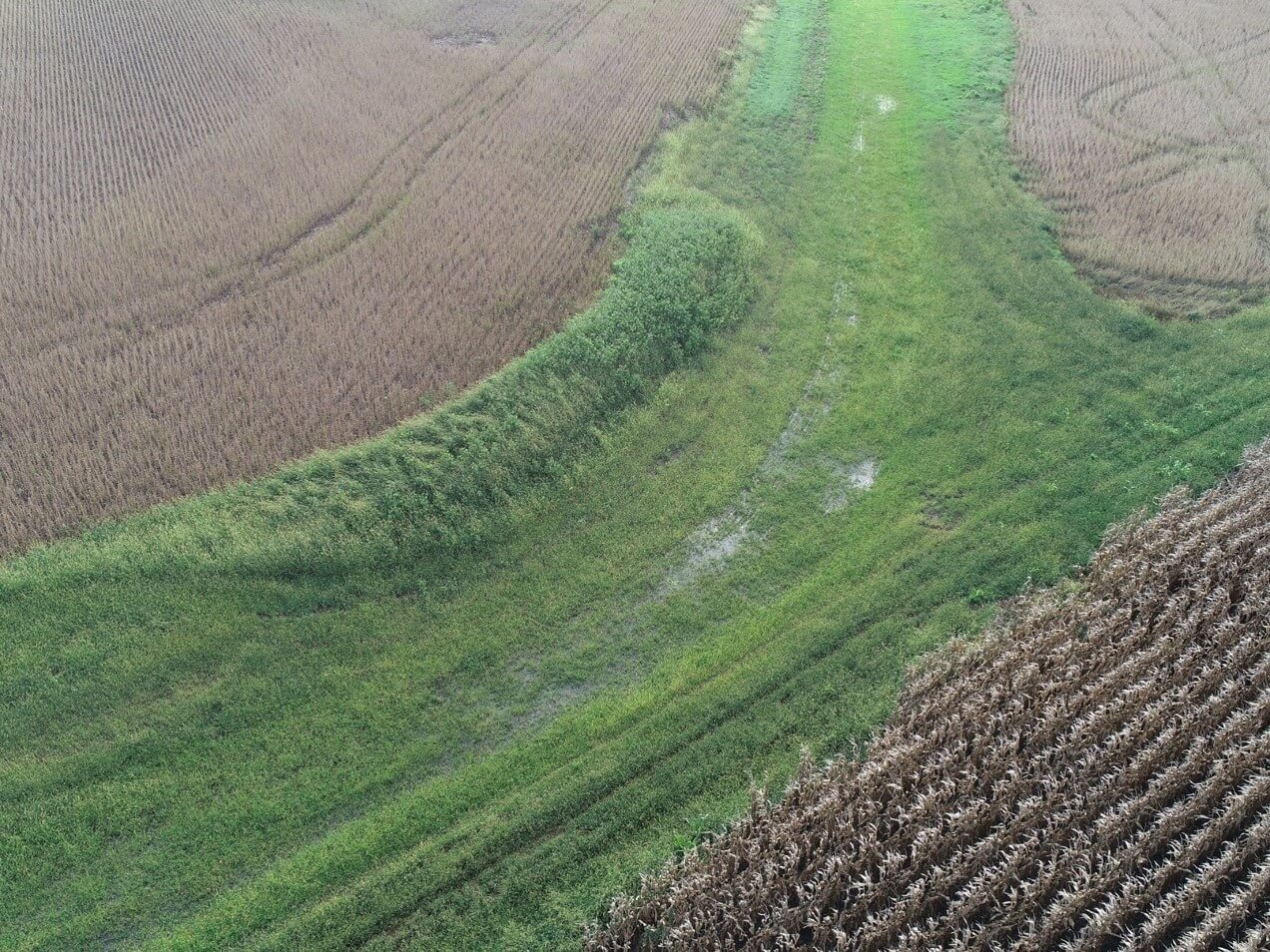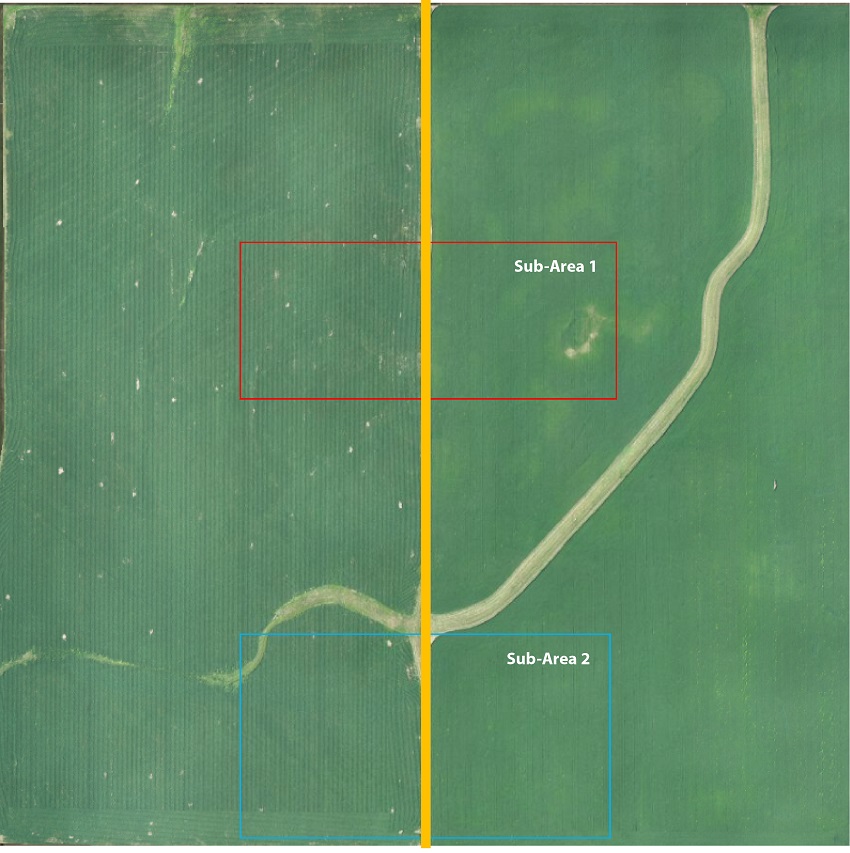Grassed waterway management
Flown by Jon Charlesworth, Agriculture & Natural Resources Educator, 4-H Youth Development, Purdue Extension - Benton/Warren County
Stitching software can measure the depth of a grassed waterway to determine both water capacity and compliance within a Conservation Reserve Program (CRP). The graph on the left shows a shift in the elevation profile. The spike in elevation could have been caused by ground cover or inaccuracy of initial GPS points. We later determined weeds were the cause, which we validated from the ground. The use of a UAV for this type of management practice does not replace traditional boots-on-the-ground methods; however, it greatly reduces time and labor.

Here are views of three water and sediment control basin (WASCOB) structures, each containing two to three basins. A WASCOB is designed to control water runoff after rain. Each structure has a subsurface drainage system at the lowest point of the basin where the water pools. Once the water reaches the top of the drainage system, it is discharged through the main tile system. Any sediment in the water settles to the bottom of the basin, which prevents permanent erosion and reduces pollution in other water bodies.
The elevation profile on the left of the image above makes it possible to see overall hillslope as well as each individual berm.











